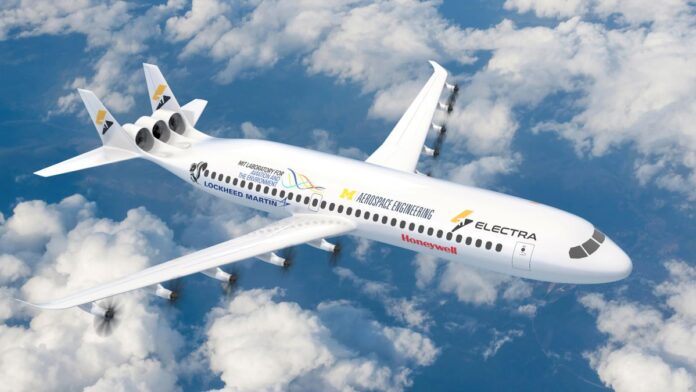NASA is working on developing a new generation of low-emission commercial aircraft that will provide a more efficient and sustainable way of traveling.
As part of its Advanced Aircraft Concepts for Environmental Sustainability (AACES) 2050 initiative, NASA has enlisted five organizations to conduct new design studies. These organizations include Boeing’s Aurora Flight Sciences, Electra, the Georgia Institute of Technology, JetZero, and Pratt & Whitney, according to a statement from NASA.
“Through initiatives like AACES, NASA is positioned to harness a broad set of perspectives about how to further increase aircraft efficiency, reduce aviation’s environmental impact and enhance U.S. technological competitiveness in the 2040s, 2050s and beyond,” Bob Pearce, NASA associate administrator for the Aeronautics Research Mission Directorate, said in the statement.
The total amount awarded to support the five NASA-funded studies is $11.5 million. Each organization brings specific expertise to the design of the next-generation aircraft concept, including alternative fuel sources, propulsion technologies, and aerodynamic vehicle design.
Related: Airplane contrails are a tricky, and surprising, contributor to global warming
“As a leader in U.S. sustainable aviation research and development, these awards are one example of how we bring together the best ideas and most innovative concepts from the private sector, academia, research agencies and other stakeholders to pioneer the future of aviation,” Pearce said in the statement.
Aurora Flight Sciences will study alternative aviation fuels, propulsion systems, aerodynamic technologies, and aircraft configurations. Electra will explore electric propulsion as well as unique aerodynamic design features to reduce emissions and noise.
Researchers at the Georgia Institute of Technology will focus on sustainability technologies, including alternative fuels, propulsion systems, and aircraft configurations. JetZero will explore technologies for using cryogenic liquid hydrogen as a fuel source to reduce greenhouse gas emissions. Pratt & Whitney will study aviation propulsion technologies, with a focus on improving thermal and propulsive efficiency to reduce fuel consumption and greenhouse gas emissions that contribute to global warming.
“The proposals selected come from a diverse set of organizations that will provide exciting and wide-ranging explorations of the scenarios, technologies, and aircraft concepts that will advance aviation towards its transformative sustainability goals,” Nateri Madavan, director for NASA’s Advanced Air Vehicles Program, which AACES falls under, said in the statement.
The aircraft design concepts developed through AACES could enter service within the next 25 years. By reducing dependence on traditional fuel sources that contribute to greenhouse gas emissions, NASA is supporting the U.S. goal of achieving net-zero aviation emissions by 2050. For more details on the five NASA-funded studies, you can visit here.






